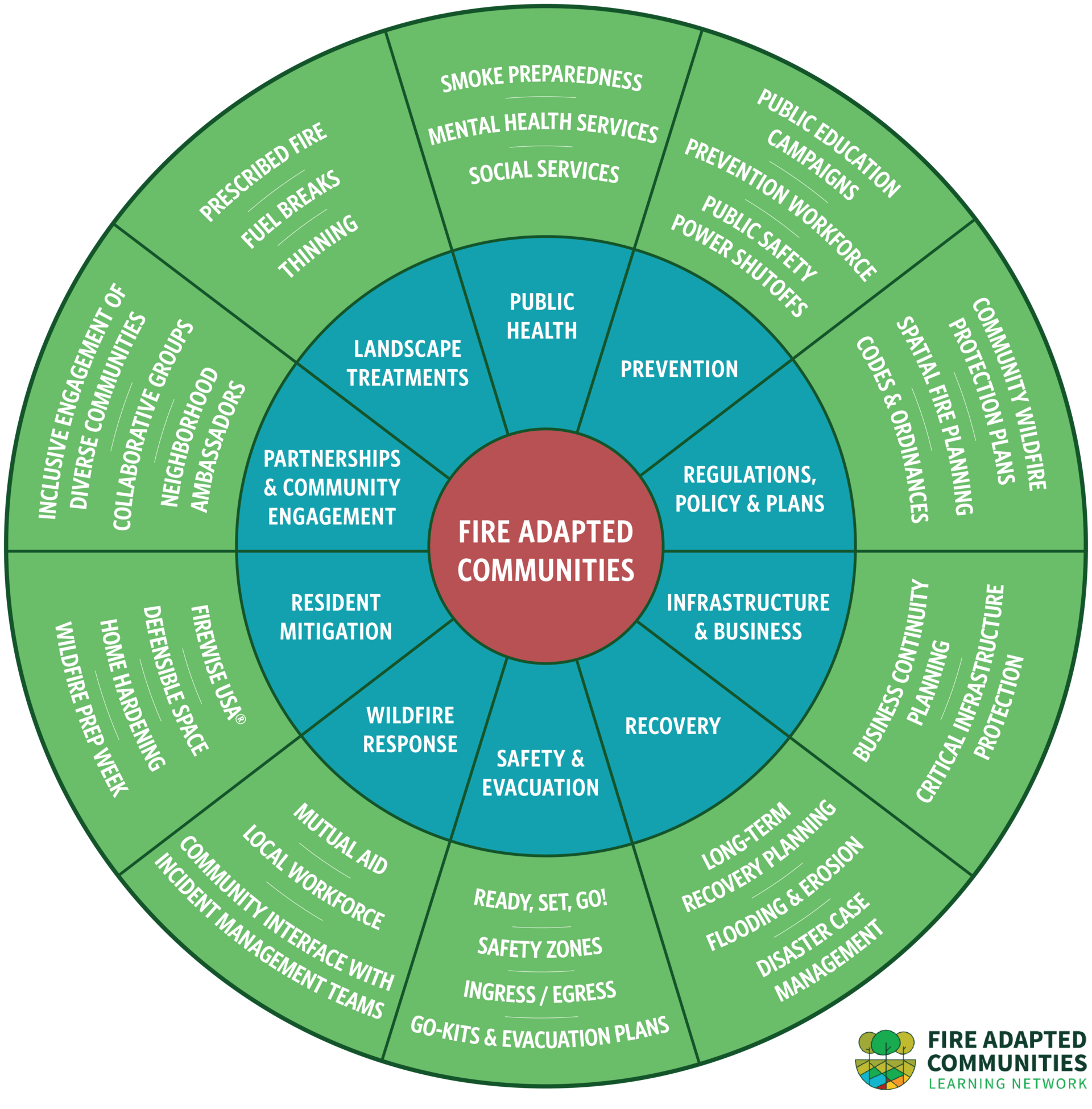Wildfire FAQ
Wildfire mitigation refers to actions that minimize destructive effects of a fire. One example is reducing combustible materials around your home. Other examples are prescribed fire, mastication (mulching up hazard vegetation), thinning trees and brush, goat grazing, eliminating "ladder fuels," and integrating natural barriers and other forms of defensible space.
And yes, it works! Check out these videos to learn more:
Yes!
- The Roaring Fork Valley Wildfire Collaborative offers financial support to homeowners for taking actions to harden their homes. Apply for a mitigation assistance grant.
- Check other Colorado incentives and grants here.
Yes! We are using Pano AI, a cutting edge 21st-century fire detection tool that uses artificial intelligence to detect smoke on the landscape as early as possible.
Wildfire resilience means working proactively to reduce the destructive consequences of wildfire. It means learning to live with fire.
"Wildfire resilient" or "fire adapted" communities address the following areas:

All top 20 of the largest wildfires in Colorado have occured in the last 20 years. The top 3 wildfires have occured in the last 3 years.
According to data provided by the National Interagency Coordination Center, more than 3.2 million acres of forest burned in wildfires across the country on average between 1983 and 2000. Between 2001 and 2020, that average jumped to more than 7 million acres - over 10,977 square miles - and the only three recorded years with more than 10 million acres burned have all occurred since 2015. (Sawyer D'Argonne, Aspen Times)
Hot embers can travel a mile through the air and start new ignition sites on any flammable materials, including roofs, leaves in gutters, and brush or other debris on the ground. Fires don't pay attention to property lines or jurisdictions, which means that we should treat our wildfire defense and planning as a team effort too. The most important area to clear of combustible materials is the first 5 feet around your home! The Colorado State Forest Service has a great guide to home mitigation.
While lightning strikes can cause wildfires, nearly 85% of wildfires are human caused. In recent human history, fires were immediately put out to protect lives and save assets. This "fire suppression" technique disrupted natural wildfire cycles and allowed hazardous levels of flammable materials to build up on the landscape.
Fire Chief Rick Balentine sits on the Wildfire Resiliency Code Board, part of the Colorado Division of Fire Prevention & Control (DFPC). Learn more about the process and schedule of upcoming meetings here.
Please contact Ali Hammond, Director of Community Wildfire Resilience, with any questions or comments: ali.hammond@aspenfire.com.
